Summer brings long, sunny days and the promise of outdoor living, but it also presents unique challenges for your home. Heat, humidity, and summer storms can take a toll, making proactive maintenance essential. A little effort now ensures your living space remains comfortable, efficient, and safe throughout the season, protecting your investment and preventing costly headaches later. This guide provides practical, actionable steps for your summer home maintenance, designed for busy homeowners and renters alike. We focus on realistic solutions that fit your real life, helping you maintain order and comfort without overwhelming your schedule or budget.

Why Summer Home Maintenance Matters for Your Peace of Mind
Addressing summer home maintenance now gives you several critical advantages. First, it boosts your home’s energy efficiency. A well-maintained home resists heat better, allowing your cooling systems to work less, saving you money on utility bills. Second, preventative seasonal home care helps you avoid inconvenient and costly repairs. Catching small issues like a loose shingle or a clogged drain before they escalate into major problems protects your investment. Third, a well-maintained home simply feels more comfortable. Knowing your home handles the summer heat and any potential storms provides immense peace of mind. Fourth, it extends the lifespan of your home’s components, from your HVAC system to your exterior paint. As noted by experts at Bob Vila, consistent maintenance prevents wear and tear, making your home a more durable and pleasant living space for years to come.
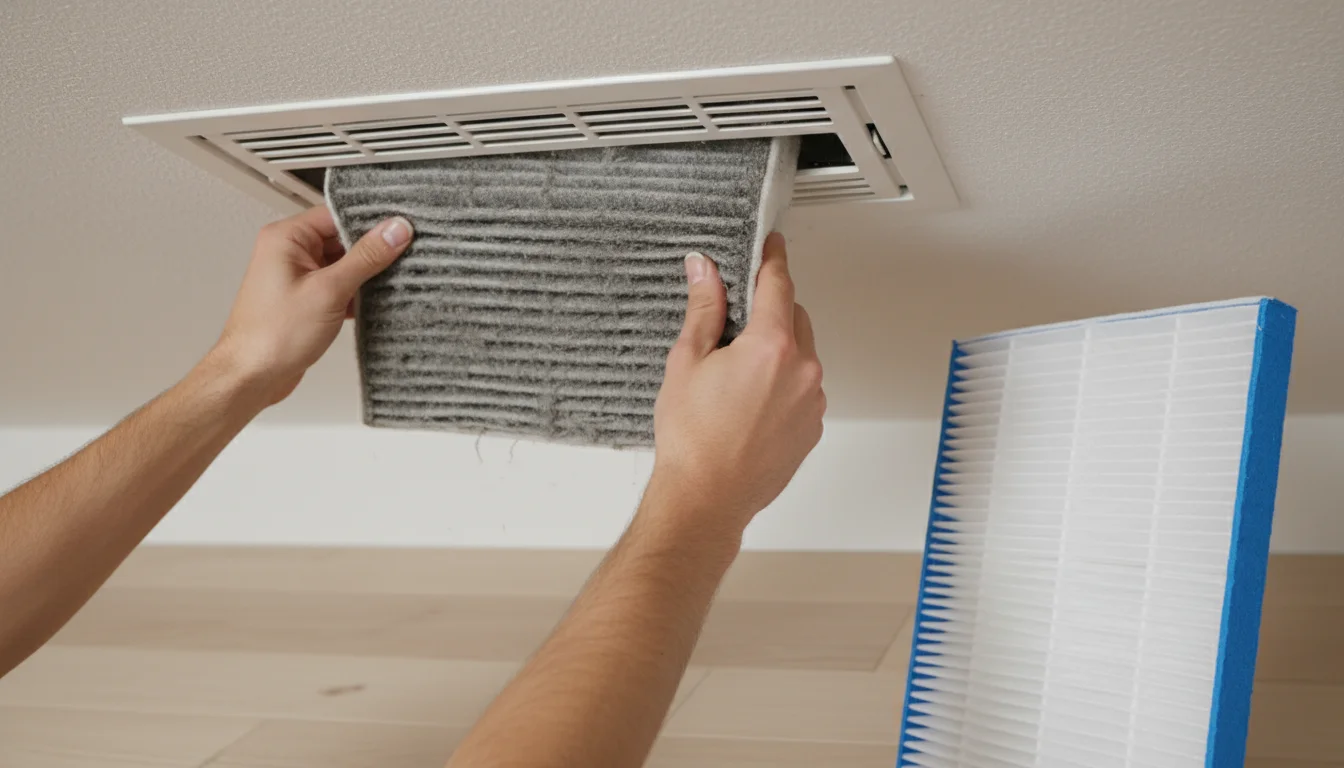
Task 1: Inspect and Maintain Your Air Conditioning System
Your air conditioning unit works hard during the summer months. Giving it proper attention ensures it runs efficiently and keeps your home cool. This crucial part of your summer checklist prevents breakdowns and keeps your energy bills in check.
Your Action Plan:
- Change Air Filters: Replace your AC filters every one to three months, especially if you have pets or allergies. Clean filters improve air quality and allow your unit to breathe freely, enhancing efficiency. The EPA emphasizes that clean filters are essential for good indoor air quality.
- Clean Outdoor Unit: Turn off power to the unit at the breaker. Carefully clear away any debris like leaves, grass clippings, or dirt from the outside condenser coils. Use a gentle brush or hose. Ensure fins are straight, using a fin comb if necessary.
- Check Drain Line: Locate the condensate drain line, usually a PVC pipe. Ensure it flows freely. A clogged line can cause water backup and potential leaks. You can often clear minor clogs by pouring a cup of distilled vinegar down the line to inhibit mold growth.
- Consider Professional Servicing: For a comprehensive check, including refrigerant levels and electrical components, schedule a professional tune-up every spring. Many local utility companies offer rebates for annual HVAC maintenance, making this a budget-conscious choice. This helps your unit achieve optimal performance, aligning with guidance from Energy Star on energy efficiency.

Task 2: Clean Your Gutters and Downspouts
Clogged gutters direct rainwater improperly, leading to potential issues like foundation damage, leaky basements, and fascia rot. Keeping them clear is a straightforward but impactful part of your summer home maintenance routine.
Your Action Plan:
- Gather Tools: You will need a sturdy ladder, work gloves, a small trowel or scoop, and a bucket.
- Remove Debris: Starting at one end, carefully scoop out leaves, twigs, and accumulated sludge from the gutters. Place debris into your bucket.
- Flush with Water: Once you clear the bulk of the debris, use a garden hose to flush water through the gutters and downspouts. Watch to ensure water flows freely and exits the downspout without overflowing or leaking. If water backs up, a clog exists in the downspout.
- Clear Downspout Clogs: If a downspout clogs, try flushing it with a strong stream from the hose. If that fails, use a plumber’s snake to dislodge stubborn blockages.
- Check for Leaks: As you flush, observe if any water leaks from the gutter seams or holes. Apply gutter sealant to minor leaks or consider professional repair for larger damage.

Task 3: Check Your Roof for Damage
Your roof protects your entire home, and summer storms can expose vulnerabilities. A quick, annual inspection from the ground or a ladder helps identify issues before they become major problems, a key aspect of seasonal home care.
Your Action Plan:
- Visual Inspection (Ground Level): Walk around your house and use binoculars to inspect your roof. Look for:
- Missing, cracked, or curled shingles.
- Granules accumulating in gutters, indicating shingle wear.
- Loose or damaged flashing around chimneys, skylights, and vents.
- Sagging sections, which might indicate structural issues or significant water damage.
- Ladder Inspection (Carefully): If comfortable and safe, use a sturdy ladder to get a closer look at areas identified from the ground. Avoid walking on the roof unless you have experience and proper safety equipment.
- Interior Check: During or after a heavy rain, check your attic or top-floor ceilings for any signs of water stains or leaks.
- Address Repairs: For minor issues like a few loose shingles, you might attempt DIY repairs using roofing cement. However, for significant damage or if you feel uncomfortable on a ladder, hire a qualified roofing professional. Resources like This Old House offer detailed guides on identifying and addressing common roof problems.
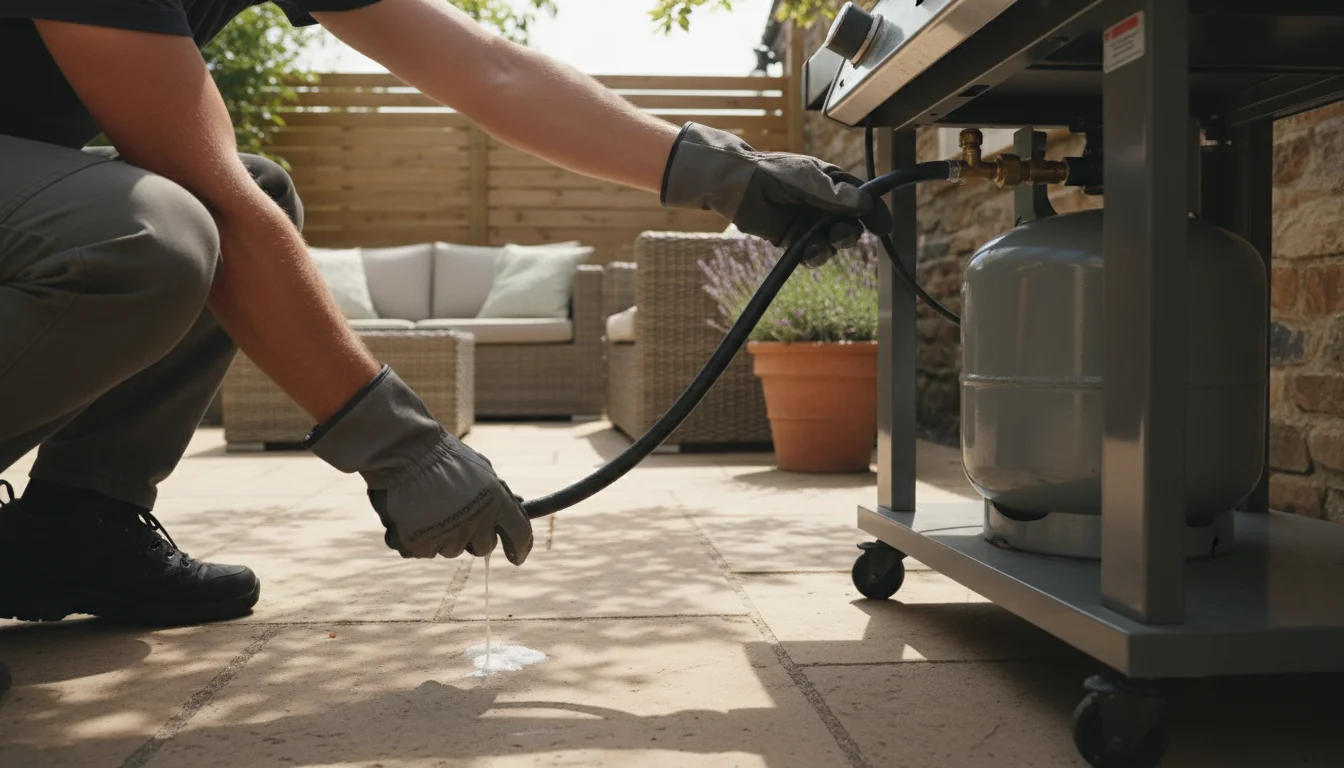
Task 4: Service Your Grill and Outdoor Cooking Areas
Summer means grilling. Ensure your outdoor cooking equipment is clean, safe, and ready for action. This task is both about functionality and fire safety.
Your Action Plan:
- Deep Clean Grates: Heat your grill to high, then use a stiff wire brush to scrape off all burnt-on food. For stubborn residue, consider a grill cleaner after the grates cool.
- Clean Interior: Scrape the inside of the grill lid and bottom to remove grease and carbon buildup. Empty and clean the drip tray.
- Check Gas Lines (Propane Grills): Ensure gas hoses have no cracks or leaks. You can test for leaks by brushing soapy water over the hose and connections; bubbles indicate a leak. Tighten connections or replace the hose if necessary.
- Inspect Burners: Clear any clogged burner ports with a wire brush or a specialized tool. Ensure even flame distribution.
- Clean Surroundings: Wipe down your grill exterior, and clean any outdoor cooking surfaces or carts. Consider power washing your patio or deck if you haven’t already.
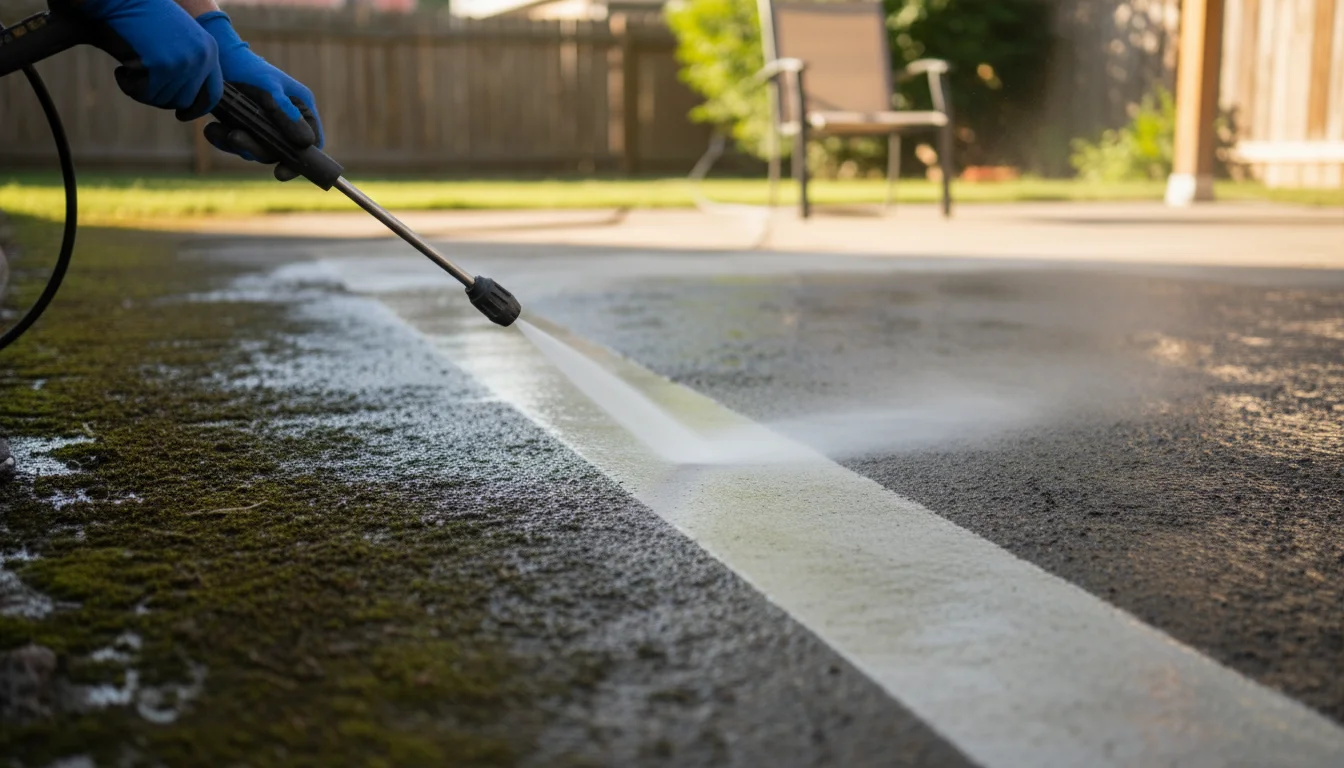
Task 5: Power Wash Exterior Surfaces
Over time, dirt, grime, mold, and mildew accumulate on your home’s siding, driveway, deck, and patio. Power washing gives these surfaces a fresh, clean look, enhancing curb appeal and protecting surfaces from degradation.
Your Action Plan:
- Choose the Right Equipment: You can rent a power washer or purchase an electric model for lighter tasks. Always use the appropriate nozzle and pressure setting for the surface you clean. Too much pressure damages siding or wood.
- Prepare the Area: Clear outdoor furniture, plants, and decorations. Cover delicate plants with tarps. Ensure windows and doors are fully closed.
- Pre-Treat (Optional): For heavy mold or mildew, apply a house wash or mildew remover with a garden sprayer before power washing. Allow it to sit for the recommended time.
- Start Washing: Begin with a low-pressure setting and an oscillating nozzle. Hold the wand at an angle, keeping a consistent distance from the surface. Work in sections, using overlapping strokes. Always aim downwards to avoid forcing water under siding or shingles.
- Safety First: Wear protective eyewear and closed-toe shoes. Never aim the power washer at people or pets. Avoid power washing painted surfaces or old mortar that might chip. For detailed safety guidance, review resources like Family Handyman.
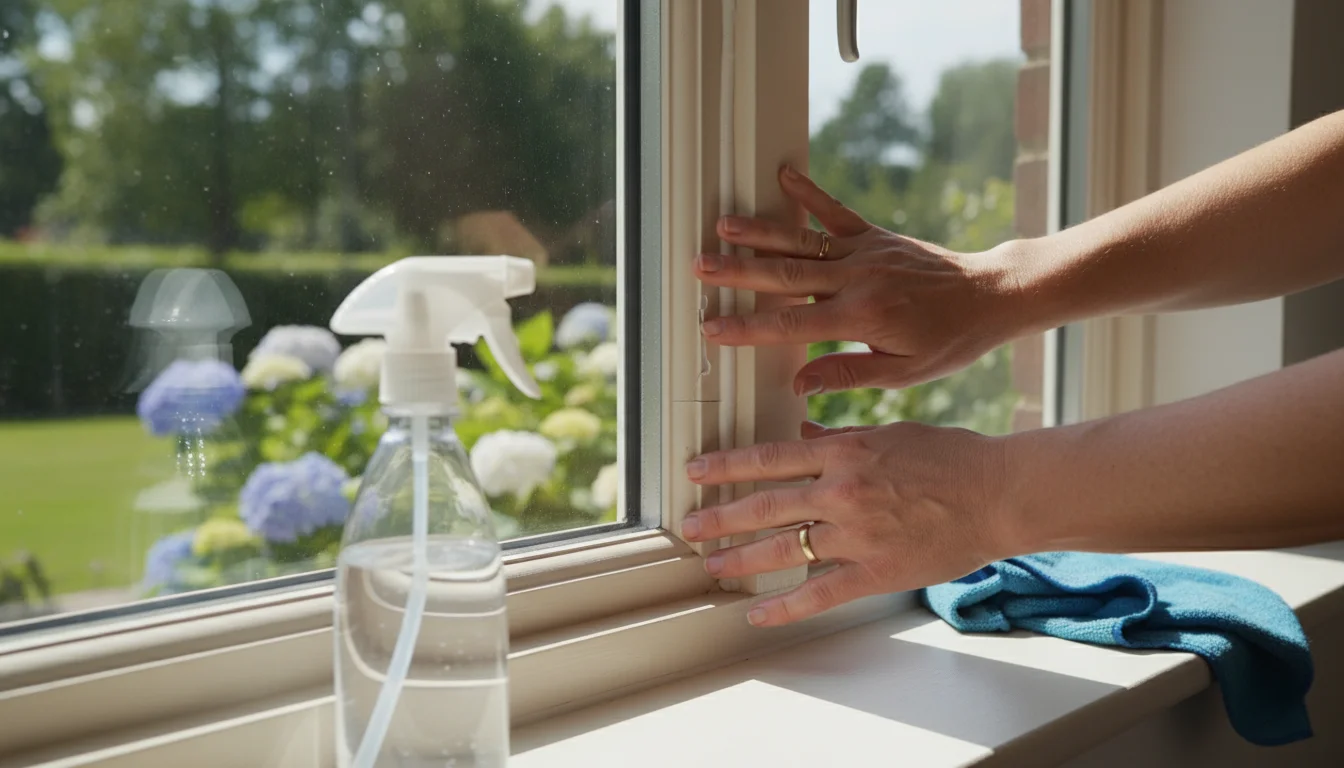
Task 6: Inspect and Repair Windows and Screens
Well-maintained windows keep the heat out and the cool air in, contributing significantly to your energy efficiency. Intact screens keep pests outside where they belong, making this a vital part of your summer checklist.
Your Action Plan:
- Clean Windows: Wash all windows, inside and out. Use a squeegee for streak-free results. Clean windows improve natural light and allow you to spot any frame or sill issues.
- Check Seals and Caulking: Inspect the caulking around your window frames. Look for cracks, gaps, or deterioration. Re-caulk as needed to prevent air leaks, which compromise your AC efficiency.
- Inspect Weatherstripping: Ensure weatherstripping around window sashes remains intact and provides a tight seal when closed. Replace worn-out strips.
- Repair Screens: Mend small tears in screens with a screen repair kit. For larger holes or heavily damaged screens, replace the entire screen. Intact screens keep insects out while allowing fresh air in.
- Lubricate Moving Parts: For double-hung or sliding windows, lubricate tracks and moving parts with a silicone spray. This makes opening and closing easier.

Task 7: Tend to Your Landscaping and Irrigation
Your yard thrives in the summer, but it also demands attention. Proper landscaping maintenance enhances your home’s beauty and prevents potential problems. An efficient irrigation system saves water and keeps your plants healthy.
Your Action Plan:
- Trim Overgrown Shrubs and Trees: Cut back any branches or bushes that touch your home’s siding or roof. This prevents moisture buildup, pest access, and potential damage during storms.
- Check Sprinkler System: Run your irrigation system and visually inspect all sprinkler heads. Ensure they spray in the correct direction, cover your lawn evenly, and are not broken or clogged. Adjust spray patterns as needed to avoid watering pavement.
- Mulch Garden Beds: Apply a fresh layer of mulch to your garden beds. Mulch conserves soil moisture, suppresses weeds, and regulates soil temperature, reducing your watering needs.
- Address Drainage: Ensure proper grading around your home. Water should drain away from your foundation, not pool near it. Consider adding French drains or adjusting landscaping if you notice pooling.
- Lawn Care: Maintain your lawn by mowing at the appropriate height for your grass type, typically 2-3 inches. Taller grass shades the soil, reducing water evaporation. Water deeply and infrequently, preferably in the early morning to minimize evaporation.

Task 8: Deep Clean and Declutter Your Pantry
Summer is an excellent time to refresh your pantry, a key area for home comfort and organization. This task improves food safety, prevents pests, and makes meal prep much smoother.
Your Action Plan:
- Empty Everything: Remove all items from your pantry shelves. This gives you a clear workspace.
- Clean Thoroughly: Wipe down shelves, walls, and the floor. Use a mild all-purpose cleaner. For a deeper clean, consider a solution recommended by the American Cleaning Institute.
- Declutter and Dispose: Check expiration dates on all food items. Discard anything expired, stale, or unrecognizable. Donate unopened, non-expired items you know you will not use.
- Inspect for Pests: Look for any signs of pantry pests like moths or beetles. If you find them, discard affected items, thoroughly clean the area, and consider using pest traps. Transfer grains and cereals into airtight containers.
- Organize by Zones: Return items to the pantry, organizing them into zones. For example, baking supplies in one area, snacks in another, canned goods grouped together. Use clear containers for dry goods to easily see contents. Grouping similar items helps you maintain order.
- Consider Seasonal Needs: Prioritize summer staples like grilling marinades, picnic supplies, or items for homemade ice cream. Store heavy winter soups further back.

Task 9: Test Smoke and Carbon Monoxide Detectors
Home safety never takes a vacation. This quick but critical task ensures your life-saving detectors function correctly, protecting your family from unseen dangers. Make it a regular part of your seasonal home care.
Your Action Plan:
- Test Monthly: Press and hold the “test” button on each smoke and carbon monoxide detector until you hear a loud alarm. This confirms the battery and alarm are working.
- Change Batteries Annually: Even if your detectors appear to work during the monthly test, change the batteries at least once a year. A common reminder is to do it when you change your clocks for daylight saving time.
- Check Expiration Dates: Smoke detectors typically last about 10 years, and carbon monoxide detectors last 5-7 years. Look for the manufacturing date on the back of the unit. Replace any detectors past their expiration date, even if they still test fine.
- Install Strategically: Ensure you have detectors on every level of your home, inside and outside sleeping areas.
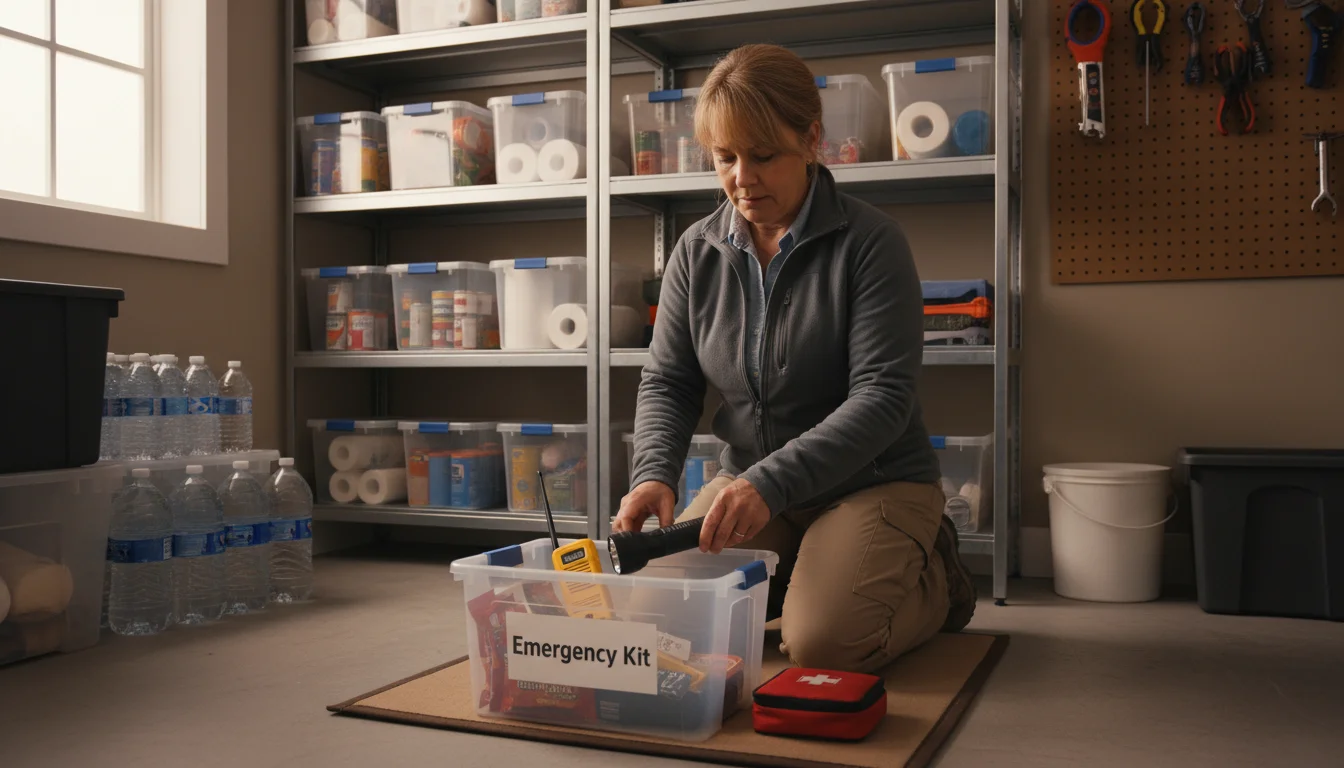
Task 10: Prepare for Storm Season
Summer often brings severe weather. Taking steps to prepare your home and family protects you when storms hit, offering significant peace of mind. This proactive measure is a key component of a comprehensive summer checklist.
Your Action Plan:
- Secure Outdoor Items: Store or secure loose items in your yard, such as patio furniture, grills, trash cans, and garden decor. High winds easily turn these into projectiles.
- Check Trees: Inspect trees for dead or weak branches that could fall during a storm. Trim them or hire an arborist for larger tasks.
- Review Emergency Kit: Assemble or update your emergency kit. It should include water, non-perishable food, a first-aid kit, flashlights with extra batteries, a weather radio, and any necessary medications.
- Develop a Family Plan: Discuss with your family what to do in case of a power outage or severe weather. Identify a safe room in your home and an out-of-area contact.
- Backup Important Documents: Keep copies of important documents in a waterproof, fireproof container or digitally backed up in a secure cloud service.
- Generator Maintenance (If Applicable): If you own a generator, test it regularly and ensure you have an adequate fuel supply.

Budget-Friendly Tips for Summer Maintenance
Maintaining your home does not need to break the bank. Many tasks on this summer checklist are DIY-friendly, saving you money and empowering you with practical skills. Here is how to keep costs down:
- Embrace DIY: Tasks like cleaning gutters, changing AC filters, and power washing are excellent opportunities for DIY. You save labor costs and gain a deeper understanding of your home’s needs. Resources like HGTV Home offer numerous guides for these types of projects.
- Buy Supplies in Bulk or Off-Season: Purchase items like air filters, cleaning solutions, or even repair kits when they are on sale or in larger quantities. End-of-season sales often provide great deals.
- Regular, Small Actions: Consistently performing small maintenance tasks prevents them from escalating into expensive repairs. A little effort now avoids a major expense later.
- Leverage Local Resources: Check with your local utility company for energy efficiency audits or rebates on HVAC tune-ups or smart thermostats. Some communities offer free shredding events or hazardous waste disposal days, helping you declutter responsibly.
- Borrow or Rent Tools: Instead of buying expensive equipment like a power washer, consider renting one from a home improvement store for a day, or borrowing from a neighbor or friend.

Frequently Asked Questions
How often should I clean my gutters during the summer?
Clean your gutters at least once at the beginning of summer, and again after any major storms or if you have many trees shedding leaves nearby. Heavy rains can quickly fill them, so regular checks are beneficial.
Can I clean my AC unit myself, or do I need a professional?
You can safely perform basic AC maintenance yourself, such as changing filters, clearing debris from the outdoor unit, and cleaning the condensate drain line. For tasks involving refrigerant, electrical components, or if you suspect a more serious issue, hire a professional HVAC technician. They possess the tools and expertise to diagnose and repair complex problems safely and efficiently.
What if I find a major roof issue during my inspection?
If you discover significant roof damage, like widespread missing shingles, large cracks, or signs of sagging, immediately contact a licensed and insured roofing professional. Attempting extensive roof repairs yourself without proper experience and safety equipment risks further damage to your home and serious injury to yourself.
How can I prevent mosquitoes and other pests during summer?
Eliminate standing water sources in your yard, like bird baths, old tires, or clogged gutters, as these serve as breeding grounds for mosquitoes. Repair damaged window screens, seal cracks around windows and doors, and keep your home clean and clutter-free. Consider natural repellents or professional pest control if infestations become a persistent problem.
Is it really necessary to test smoke detectors monthly?
Yes, testing smoke and carbon monoxide detectors monthly is a critical safety practice. It ensures the batteries and alarm mechanisms are functioning correctly, providing vital early warning in case of fire or gas leaks. This small, consistent action offers significant protection for your household.
By tackling these 10 essential tasks, you prepare your home for the demands of summer. You will enjoy a more comfortable, energy-efficient, and safer living environment, allowing you to fully embrace the season without the stress of unexpected home issues. Embrace these practical steps, and your home will thank you.
For expert home organization guidance, visit
HGTV — Home, Apartment Therapy, The Container Store — Organization Tips and IKEA Home Organization.
Disclaimer: This article is for informational purposes only and is not a substitute for professional advice. Consult professional organizers or specialists for personalized recommendations.







Leave a Reply